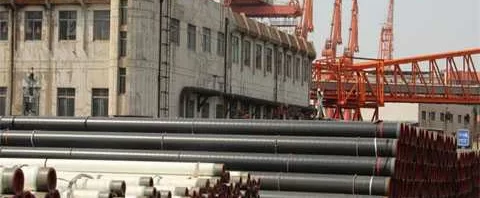Sure, I can help you with that. Here’s the article structured as per your requirements:
Classification and Grading of Industrial Pipes
Introduction
Industrial pipes play a critical role in various applications such as oil and gas, petrochemical, power generation, and many more. The quality and characteristics of industrial pipes are crucial for ensuring the safety and reliability of these systems. In this article, we will explore the classification and grading of industrial pipes, including the different types of materials, standards, and grading systems used in the industry.
Types of Industrial Pipes
Industrial pipes come in various types depending on their materials and manufacturing processes. Common types of industrial pipes include carbon steel pipes, stainless steel pipes, alloy steel pipes, and non-ferrous metal pipes. Each type has its unique properties and is suitable for specific applications. For example, carbon steel pipes are widely used in high-temperature and high-pressure environments, while stainless steel pipes are preferred for their corrosion resistance in chemical and food processing industries.
Standards and Specifications
To ensure the quality and performance of industrial pipes, various standards and specifications have been established by organizations such as the American Society for Testing and Materials (ASTM), the International Organization for Standardization (ISO), and the American Petroleum Institute (API). These standards cover aspects such as material composition, dimensions, and testing methods. Adhering to these standards is essential for selecting the right industrial pipes for specific applications and ensuring compliance with regulatory requirements.
Grading Systems
Industrial pipes are graded based on various factors such as pressure rating, wall thickness, and temperature resistance. The grading system provides a standardized way to categorize pipes according to their capabilities and limitations. For instance, pipes may be classified as Schedule 40, Schedule 80, or XXS (extra strong) based on their pressure capacity and wall thickness. Additionally, pipes may be assigned grade numbers such as ASTM A106 Grade B to indicate their mechanical properties and suitability for different service conditions.
Quality Control and Inspection
Ensuring the quality of industrial pipes is vital to prevent potential hazards and failures in industrial systems. Quality control measures such as non-destructive testing, dimensional inspection, and material analysis are conducted during the manufacturing and installation stages to verify compliance with the specified standards and requirements. Furthermore, third-party inspection agencies and certification bodies play a crucial role in independently verifying the quality and conformity of industrial pipes.
Conclusion
In conclusion, the classification and grading of industrial pipes are essential for selecting the right materials and ensuring the integrity of industrial systems. By understanding the types of pipes, relevant standards, grading systems, and the importance of quality control, engineers and professionals can make informed decisions regarding the selection, installation, and maintenance of industrial pipes. Adhering to established standards and best practices is paramount to achieving operational safety, reliability, and longevity in industrial pipe systems.
This article provides a comprehensive overview of the classification and grading of industrial pipes, covering the important aspects that are crucial for professionals and engineers working in the industry.
.webp)

